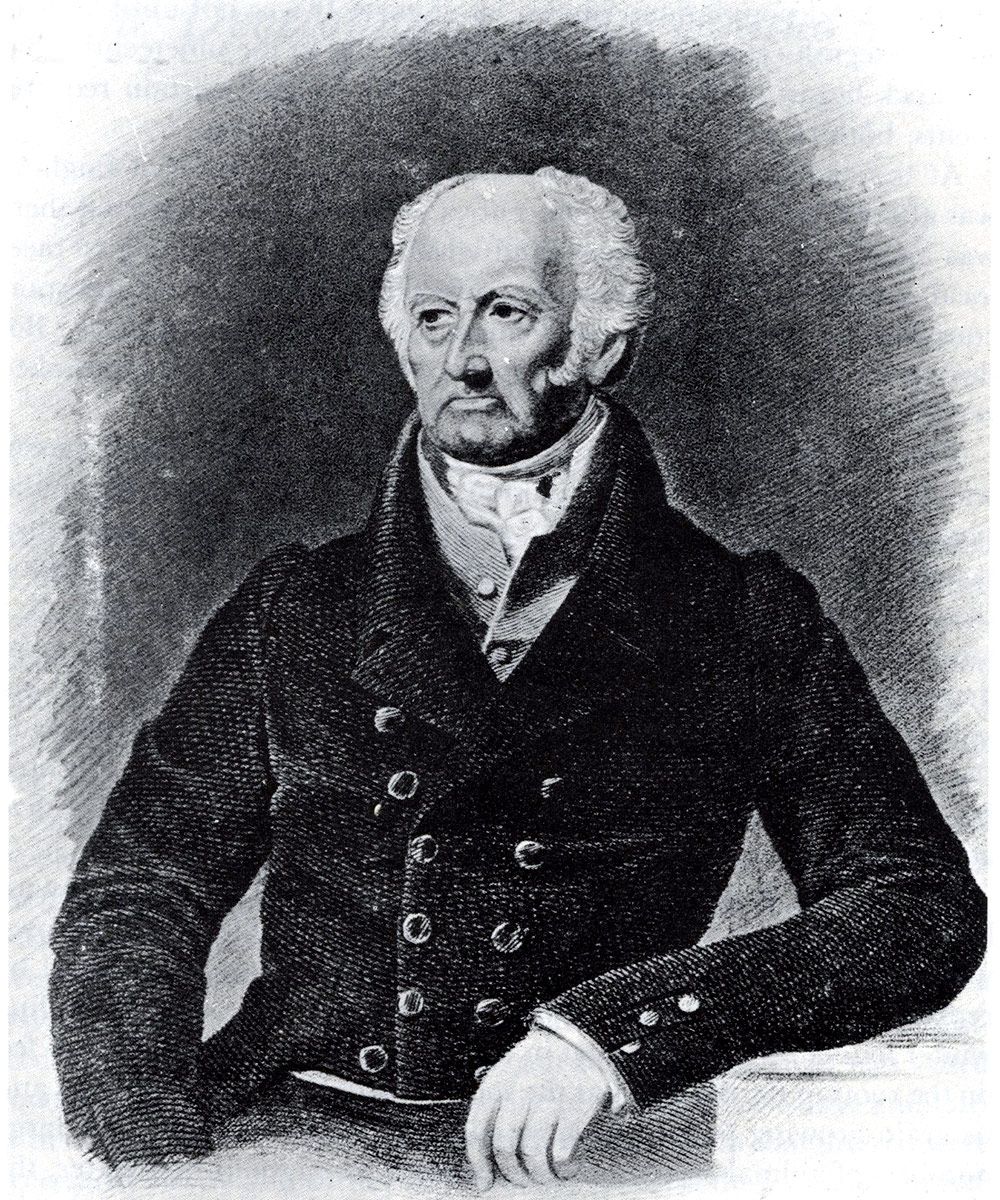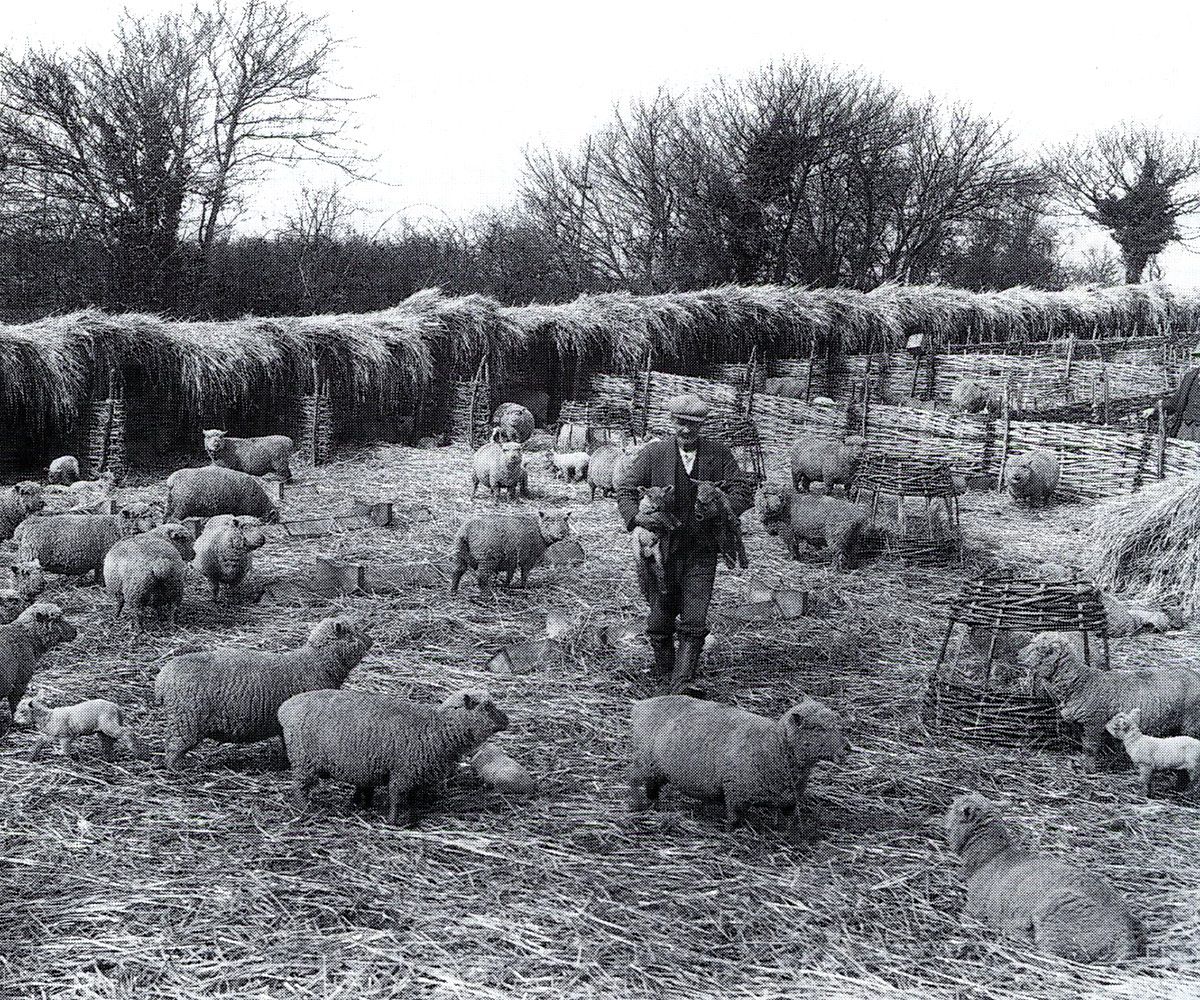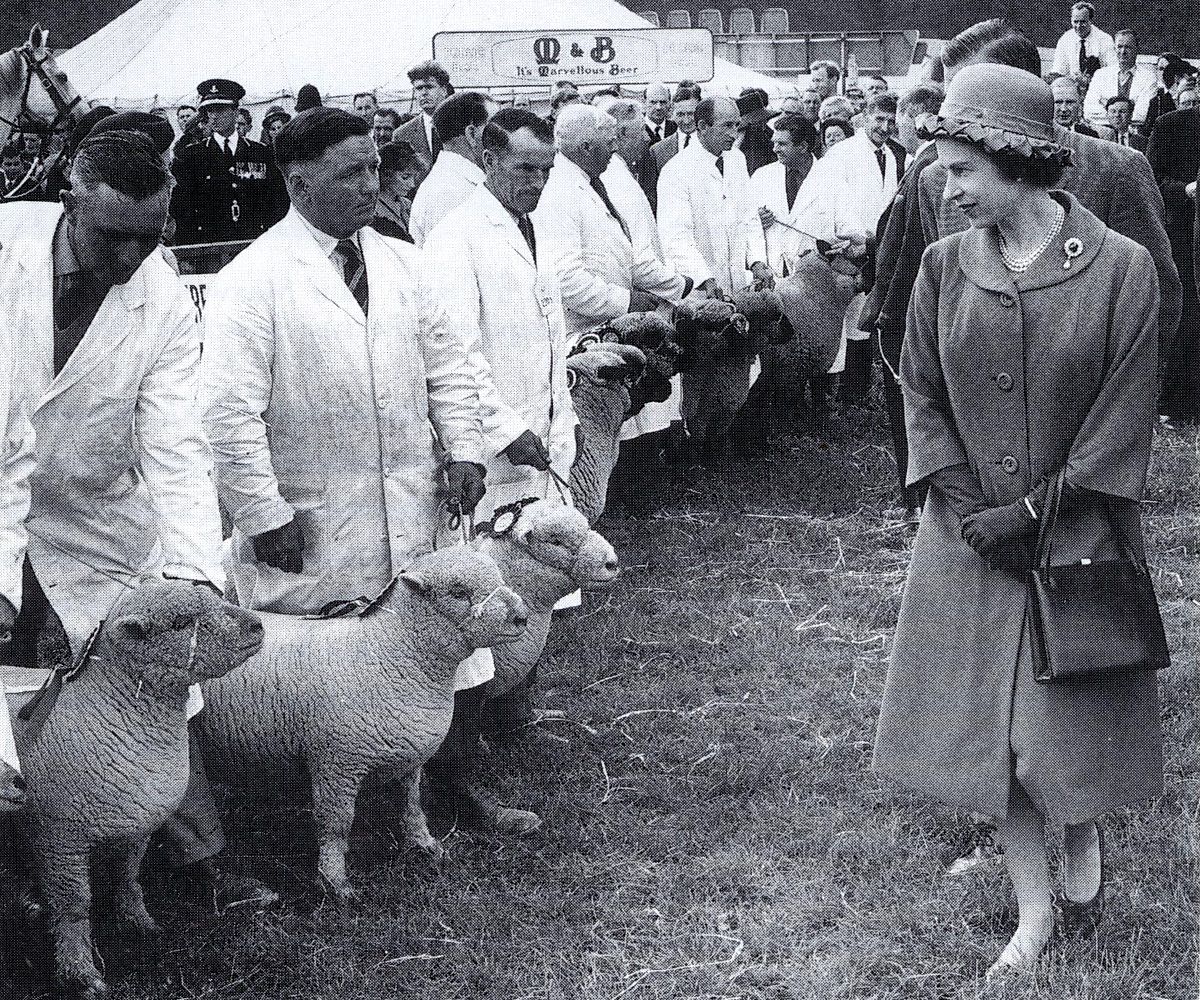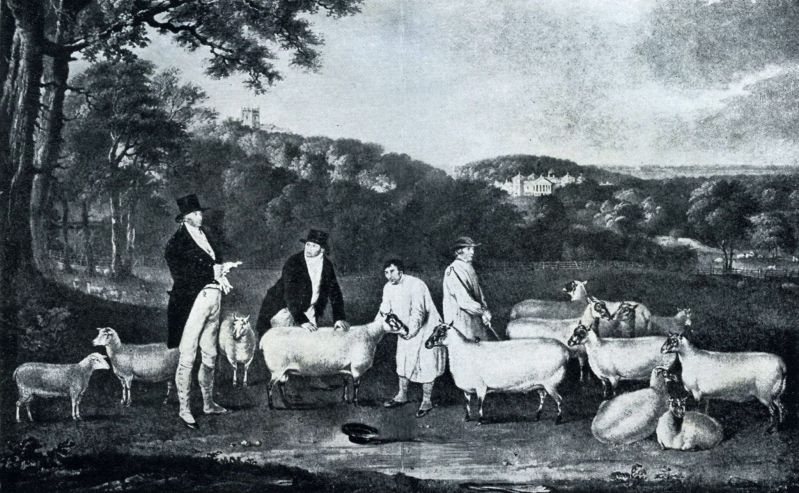The Babydoll Story
Babydoll sheep are heritage Southdown sheep, saved from near-extinction by dedicated breeders over the past thirty years and now the first choice for small-acre farms,vineyards and orchards. They are often called the smiley sheep. The lambs, with their Teddy Bear faces, never fail to win hearts, while as adults, they are calm, friendly and easy-going. They are one of the smallest breeds of sheep which makes them ideally suited for people wanting livestock that are easy to manage and family friendly.
A famous lineage
The Babydoll has one of the most prestigious family trees of the entire sheep breeding world.
It can be traced directly back to ancient short-wooled sheep inhabiting the South Downs of Sussex County, England, from time immemorial. The breed, which became known as the Southdown after its natural habitat, was famously improved from the 1770s by master sheep breeder John Ellman of the village of Glynde. It rapidly became a favourite of the UK’s greatest agriculturalists, prized for the quality its mutton and its ability to thrive in tough conditions.
These attributes were quickly seized upon by the wider sheep industry, with the Southdown genetics used to enhance and create other meat-producing breeds, including Suffolks (half Norfolk Horn, half Southdown); Shropshires; Hampshire Downs; Oxford Downs; Charollais and many of the new composite breeds.

John Ellman of Glynde 1753-1832
Australia
The first of Ellman’s improved Southdowns arrived in the early days of the new colony of New South Wales, imported by the Rev Samuel Marsden, another pioneering sheep breeder. Further imports came into Tasmania and the mainland but for the next century, the main focus of Australia’s sheep industry was on wool-producing Merinos.
The explosion of interest in the Southdowns came in the early twentieth century with increased demand from the UK for imported lamb and mutton. Producing prime lamb required different breeds of sheep and extensive research done in Victoria by Archie Browning at Yarrawonga demonstrated that the Southdown was the ideal sire for top grade meat.
In just thirty years, the number of registered flocks increased from four to more than 200. Rams were regularly imported from the great UK studs, and by the early 1960s, Australia had 562 registered breeders.
Meanwhile, World War Two had devastated the breed in the UK. The South Downs, where it was still most prominent, had been taken over for tank training, and farms ploughed up to grow food rather than graze sheep. Food regulations also favoured larger carcasses. Records at the end of the war showed the national Southdown flock was just ten per cent of its pre-war heyday.
In 1960s Australia, a market preference for bigger, leaner carcases started the decline in the Southdown’s popularity. New Zealand Southdown breeders responded to this challenge from bigger breeds, selecting for larger sheep with longer legs and necks and faces without wool. It was their upsized rams, imported into Australia from the 1970s, that saw Southdowns evolve in shape from short and square to tall and long.
We are very fortunate that award-winning Southdown breeders Dick & Bill Metcalf, from Green Hill in Victoria, stayed true to the smaller Southdown at their Hillgrove Stud when most other breeders were moving rapidly to develop the larger Southdown. Previously, the Metcalf brothers won so many awards with their Southdowns that they discontinued showing to allow other breeders a chance to win.
The Metcalfs eventually passed the Hillgrove Stud to their niece, Judy Peart who together with her husband Murray, continued to breed the smaller heritage Southdown which would become known as the Babydoll. Without Dick & Bill Metcalf and later Murray & Judy Peart, Babydolls may well have become extinct in Australia.

Traditional Southdown lambing fold in the 1930s, near Storrington, West Sussex.
(George Garland Collection, West Sussex County Record Office)

Her Majesty the Queen admires Lady Jean Philipp's Southdown held by shepherd Lewis Ward at the Royal Show, Windsor, 1950. (Coventry Standard)
Babydolls: Heritage Southdowns get a new name
Meanwhile in North America, in 1986, Robert Mock began looking for Southdowns with the original bloodlines from the 1700s.
He eventually located around 350 sheep, some with the original Southdown registration papers. Robert Mock named these sheep the Olde English Babydoll Southdowns, and gradually the Babydoll name for the smaller Southdown was adopted internationally.
In Australia, the bigger, modern Southdown has retained the ‘Southdown’ breed name while the descendants of the pre-1970s, heritage smaller-sized Southdowns were officially registered by the prestigious Australian Stud Sheep Breeders Association (ASSBA) as the ‘Babydoll’ breed in 2021.
And so a new era began in a two hundred and fifty year history of the Southdown breed.

Thomas William Coke inspecting his Southdown sheep.
("Reproduced from "Coke of Norfolk and His Friends," by kind permission of Messrs. John Lane).